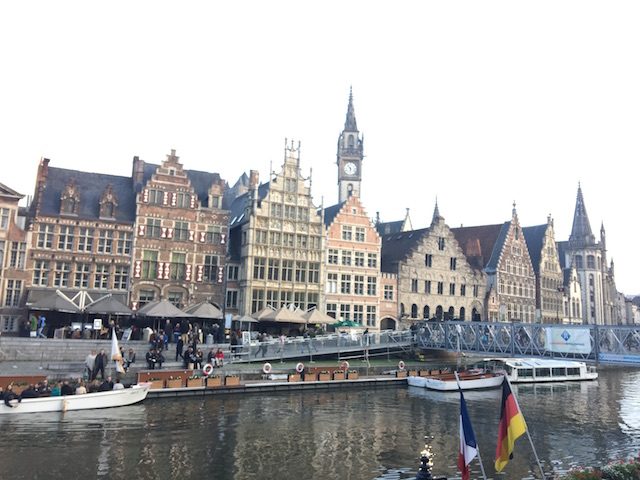SUMMARY
This is AI generated summarization, which may have errors. For context, always refer to the full article.

LE BOURGET, France – Cities are highly concentrated with people, cars, and buildings. Cities are busy with activities that need a lot of energy and therefore use more fossil fuel compared to rural areas.
Many cities in the world such as Tokyo emit the carbon to as much as 62 million tons of greenhouse gas (GHG) emissions per year. Tokyo has more emissions in a year than the total emissions from 37 countries in Africa.
Estimates by the United Nations Environment Programme (UNEP) suggest that cities are responsible for 75% of global carbon emissions, with transport and buildings being among the largest contributor. At the same time, cities are also vulnerable to climate change impacts. Cities like Mumbai and Manila, for example, are prone to floods which extreme weather events have exacerbated.
Over the years, there has been a growing movement for cities to do their share in carbon reduction and adaptation to climate change.
Speaking in one of the side events at the UN climate change conference (COP21) in France, Tom Dallesio, president, CEO and publisher of Next City said that cities must start a more sustainable pathway and align their local plans to the global calls towards low-carbon development and resiliency.
“Throughout COP21, the challenges of adaptation and mitigation have been focused mostly on rural areas. We need to aggressively incorporate cities into emission reduction plans and mechanisms for clean development,” said Dallessio.
“Cities are uniquely vulnerable to climate change, but they hold incredible potential for bold and effective advancements in mitigation and adaptation,” Dallessio adds.
Cities leading the way
For example, Rotterdam, an industrial city in The Netherlands has a strong mechanism for adapting to climate change which includes protecting the city from the sea, rivers, and both too much and too little precipitation. The city currently has climate-resilient projects include green roofs, the Benthemplein, a water square that collects rainfall, and water storage infrastructure in parking garages throughout the city.
The city of Ghent in Belgium has also implemented projects that address climate change. It has installed green roofs, which have a number of positive effects on the urban environment and are being increasingly used throughout the city. Speaking at a side event in COP21 called “Global Covenant of Mayors: Towards carbon neutral and inclusive cities”, Tine Heyse, Mayor of Ghent emphasized climate policies at the local level.
“Climate policy should contribute to reduce emissions. It can contribute to a liveable city, reduction of poverty, and better housing. Local authorities can demonstrate that local climate policy is not only good for climate but also good for citizens,” she said.
And it’s not just developed cities that are making bold steps of climate action. Mayor Josefa Errazuris of the city of Providencia, Chile, also shared about their city wide projects such as changing street lights to LED and having a target of 50% carbon reduction of GHG based on 2014 levels.
“In order to protect our commune and the sustainability of our territory, we have efforts to include climate change as part of policies,” she said.
Once the COP21 ends and a climate deal is – hopefully – signed, leaders will go back to their countries and implement national strategies that will contribute to solving the climate crisis. Many of these national actions will go down to a local scale and it will be local officials such as mayors who will ensure the implementation of good local mitigation and adaptation plans.
A few cities have shown leadership in ensuring sustainability, low carbon future and resilience-oriented development pathway. The question is: will other cities follow suit? – Rappler.com
Add a comment
How does this make you feel?
There are no comments yet. Add your comment to start the conversation.